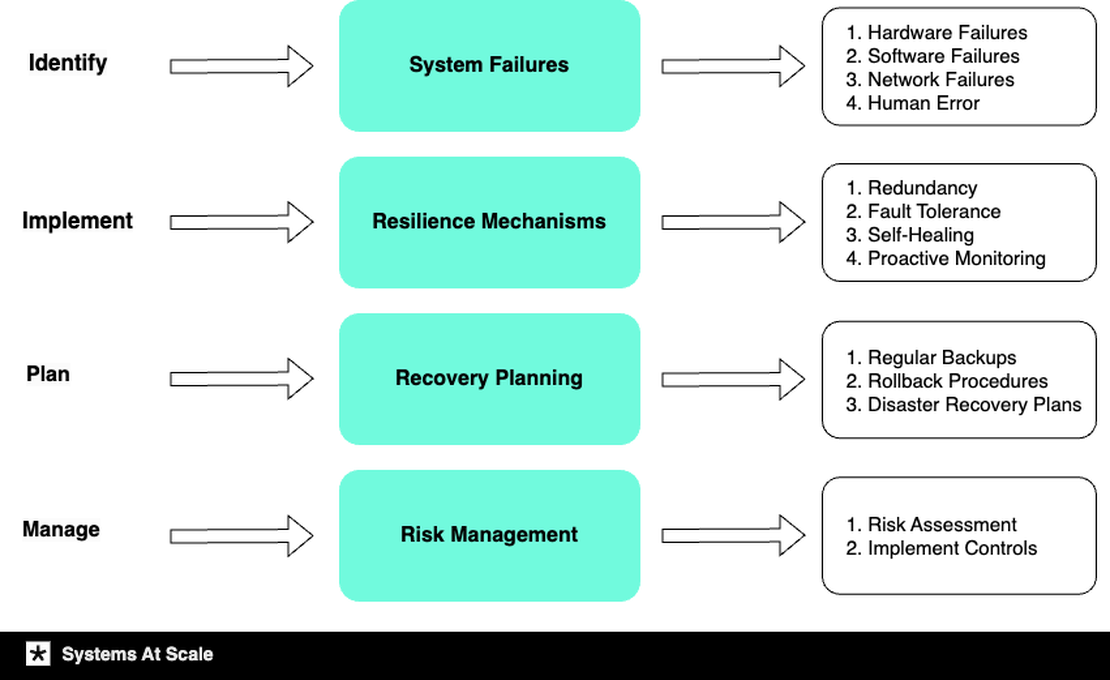Introduction
In today’s fast-paced technological landscape, system reliability isn’t just a luxury—it’s a necessity. Businesses and consumers alike depend on systems to function without hiccups. This article aims to familiarize you with the crucial components of a resilient system. We’ll go through what resilience means, the different system failures you can encounter, and various mechanisms to make your system more robust.
Definition of Resilience
What is Resilience?
Resilience in the context of systems refers to the ability of a system to continue its intended operation, possibly at a reduced level, rather than failing completely when some part of the system fails.
Importance of Resilience
As systems grow in complexity, the likelihood of encountering failures increases. These failures can be costly in terms of time, money, and reputation. Therefore, having a resilient system is beneficial and essential for maintaining operations and ensuring customer satisfaction.
Types of System Failures
Understanding the potential points of failure in a system is the first step towards building a resilient system. Failures can be broadly categorized into:
- Hardware Failures: Physical damage or malfunctions in the hardware components.
- Software Failures: Bugs, memory leaks, or incompatible software updates.
- Network Failures: Disconnection, latency, or bottlenecks in network communication.
- Human Error: Incorrect configuration, accidental data deletion, or other user-induced issues.
Resilience Mechanisms
Various techniques can be employed to enhance system resilience. We’ll discuss a few key ones here:
Redundancy
Redundancy involves having backup components that can take over when primary components fail. For instance, in a multi-node system, data can be replicated across multiple nodes to ensure continued availability in case of node failure.
Fault Tolerance
Fault tolerance refers to a system’s ability to continue operations without interruption when a component fails. This can be achieved through failover, graceful degradation, and clustering techniques.
Self-Healing
Self-healing mechanisms allow systems to automatically detect and fix faults without human intervention. This could be as simple as restarting a failed service or as complex as dynamic resource allocation.
Proactive Monitoring
Continuous monitoring can preemptively detect issues before they result in system failure. Monitoring tools can observe various metrics like CPU usage, memory usage, and network latency to predict possible points of failure.
Recovery Planning
No matter how resilient a system is, failures are inevitable. Recovery planning ensures that the system can be restored to its normal state when a failure occurs as quickly as possible. This can involve regular backups, rollback procedures, and disaster recovery plans.
Risk Management
To manage the risks associated with system failures, performing a thorough risk assessment is essential. This involves identifying the possible points of failure and then implementing controls to mitigate these risks.
Examples of Resilience in Systems
- Distributed Systems: Replicating components across multiple nodes enhances resilience. If one node fails, the system can still operate.
- Databases: Techniques like sharding can divide the database into smaller, manageable pieces stored on different nodes, enhancing resilience.
- Web Applications: Load balancing can distribute traffic across multiple servers, providing a layer of resilience by ensuring that if one server fails, others can handle the traffic.
Conclusion
Building a resilient system is a multifaceted endeavour that involves understanding potential failures, employing various resilience mechanisms, and continuously monitoring system health. While it’s impossible to create a completely fail-proof system, these techniques significantly reduce the risks and impact of system failures.
By embracing resilience as a core system design principle, businesses can maintain operations, meet customer expectations, and safeguard their reputation in an increasingly interconnected world.
